Journal of Tourism & Hospitality
Open Access
ISSN: 2167-0269
+44 1300 500008
ISSN: 2167-0269
+44 1300 500008
Research Article - (2022)
Tourism is one of the most popular businesses developed all over the world. In today’s society, a new approach to tourism has emerged due to the rapidly changing environment, increasing expectations, improving life quality, and increasing cultural integration. Modern tourism development is inevitably related to not only its impact on the country’s economy, cultural and political environment, but also tourists’ emotions, psychological state, perception, and improvement. The consequence of these changes is the formed demand for niche tourism based on the search for exclusive experiences. Creators of the tourism experience are looking for new resources of cultural heritage in order to satisfy the growing demand.
One of them is the heritage of the former Soviet bloc countries whose potential has not been used fully yet. However, many post-Soviet countries face one of the most difficult tourism development problems, i.e., to ensure giving acceptable sense of the Soviet heritage to the society without limiting its exploitation in the tourism industry. Most of the former bloc countries currently identify with the Soviet heritage and acknowledge the importance of such heritage for the national cultural development. Despite this, unclear conceptualization of this heritage as well as ambiguous ratio of the Soviet heritage to the cultural tourism industry still exists. Therefore, this review article aims at conceptualizing the phenomena of the Soviet heritage in more detail giving emphasis to the distinctive features of the Soviet heritage, clearly defining the situation of the Soviet heritage in the context of the tourism industry, and evaluating the Soviet heritage as a tourism resource.
Soviet heritage; Tourism industry; Dark heritage; Nostalgia tourism
Tourism is one of the most popular businesses developed all over the world. In today’s 21st century society, a new approach to tourism has emerged due to the rapidly changing environment, increasing expectations, goals, improving social life quality and increasing cultural integration [1-3]. Modern tourism development is inevitably related to its impact on the country’s economy, cultural and political environment, and also tourists’ emotions, psychological state, improvement of spiritual and mental perception. Such qualities are particular to cultural tourism that is inseparably related to cultural heritage [4].
The consequence of these changes is the formed demand for niche tourism based on the search for exclusive experiences. Creators of the tourism experience are looking for new resources of cultural heritage in order to satisfy the growing demand [5]. One of them is the heritage of the former Soviet bloc countries whose potential has not been used fully yet. However, many post-Soviet countries face one of the most difficult tourism development problems, i.e., to ensure giving acceptable sense of the Soviet heritage to the society without limiting its exploitation in the tourism industry.
Since 1990, the alternative tourism has grown; its basic motif is the search for exclusivity and the desire to know the history and culture of other countries [6]. Central and Eastern European regions with plenty of communist regime heritage can offer such experience and landmarks for those who are directly interested in the communist period history, and those who are interested in heritage in general. Moreover, since the collapse of the communist regime, Central and Eastern European countries have been creating their new national identities. Most of the former bloc countries currently identify with the Soviet heritage and acknowledge the importance of such heritage for the national cultural development.
The Soviet heritage can be treated as a resource of special demands tourism that would perfectly represent the former bloc countries from the political, cultural, and social points of view [7]. It is important to note that the use of the Soviet heritage in the tourism industry relates to not only outbound or inbound tourism, but also local tourism. Local people’s interest in this area of tourism is related to the Soviet history, nostalgia, desire to remember and feel the former life period, and nurturing of its culture and nationalism [8]. The fact that the Soviet heritage is a great opportunity to develop tourism more intensively for those countries of the region that do not have greater heritage resources is also important. Therefore, the aim of the article is to define the concept of the Soviet heritage in more detail giving emphasis to the distinctive features of the Soviet heritage, clearly rethinking the situation of the Soviet heritage in the context of the tourism industry and evaluating the potential of the Soviet heritage as a tourism resource [9].
Conception of the soviet heritage
According to UNESCO, heritage is everything that is inheritable. In a broader sense, heritage encompasses values of lasting legacy, i.e., places and objects that people want to preserve. Some objects are valued because they are the legacy of the ancestors, other heritage objects are simply admired by people (natural and cultural heritage resources), and others are significant for science or are irreplaceable sources of life and inspiration [10]. When speaking about cultural heritage, it is important to emphasize that this is a reference point for and a source of human identity and outlook. UNESCO distinguishes another concept of heritage, i.e., heritage is understood as a set of signs that testify human activity and achievements throughout time.
Heritage is often identified with material values that have something “old” and are characteristic of a certain value or historical period flow [11]. According to Kaunas, heritage is capital of a country or nation and one of the most important spiritual and material values. It encompasses objects of history, archaeology, architecture and urban development, writing, press, art and other objects created by intellectual and practical activities. Authors such as Ashworth, Howard relate heritage to an object whose various constituents in various places during various time periods are attributes the status of heritage in order for people to experience satisfaction and satisfy their needs [12].
Heritage is everything that people want to preserve or collect, and usually have desire to transfer this to others [13]. This includes writing, musical works, folklore, ethnography, i.e., spiritual culture historical legacy of a country and its nations, a result of every culture, education, science historical development, and one of the most important features of national identity [14]. Identity is what reveals another characteristic of heritage, i.e., an element of the identity of an individual or humanity. It is important to note that any heritage is strongly related to someone’s identity.
A frequent mistake in understanding the concept of heritage occurs when two main concepts, i.e., heritage and legacy, are confused [15]. The main difference between them is the aspect of value. From the abundant heritage of previous times, certain separate objects are selected under the influence of socio-cultural needs; these objects are attributed certain values, and then they are acknowledged by state institutions and become heritage. It would not be a mistake to call heritage a resource that can encompass historical events, personalities, material remnants, mythology, and folklore. These resources, i.e., legacy, become heritage due to interpretation-a process during which legacy turns into heritage. Legacy is interpreted and turned into heritage, and the object of such heritage is then interpreted by the society [16]. As the analysis of the concept of heritage shows, it is quite difficult to provide an unambiguous description of heritage. In today’s society, the concept of heritage has become broader by several aspects (Figure 1).
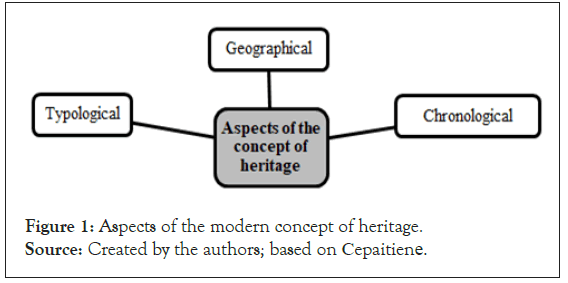
Figure 1: Aspects of the modern concept of heritage.
Source: Created by the authors; based on Cepaitiene.
As Figure 1 shows, the first aspect is the geographical aspect because it encompasses objects that are treated as local and global scale heritage. The second aspect is the chronological aspect because it includes objects and phenomena of recent past thus diminishing the traditional barriers created by time distance between the past and present cultures. The third aspect is the typological aspect that encompasses various nature objects and values, i.e., natural, cultural, or mixed. It is important to note that the concept of heritage includes different social values and aspects of cultural value [17]. Heritage means different and various things for different people; therefore, certain objects become heritage and others do not.
When creating such lists of heritage, it is necessary to assign objects to a certain category of heritage; however, categorization of heritage is quite a complex and subjective process because it is often difficult to tell which category an object is assigned to for instance, an object that has been assigned to nature could have been assigned to artifacts as well. There are many heritage objects that could be attributed to several categories [18]. Based on categories, heritage is often divided into natural and cultural heritage adding mixed heritage as well. To sum up this division of heritage based on categories, it is possible to provide a certain connection between its separation and the distinguished categories (Figure 2).
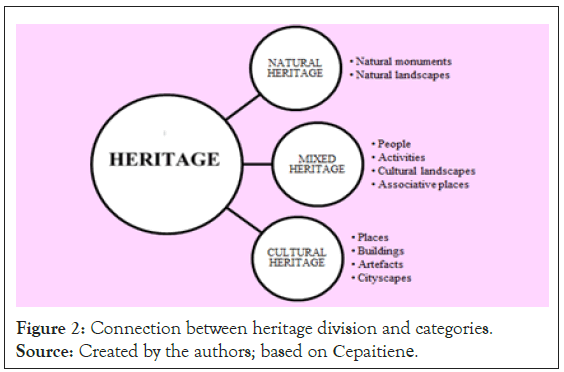
Figure 2: Connection between heritage division and categories.
Source: Created by the authors; based on Cepaitiene.
As the Figure 2 shows heritage can be divided into the following: natural (natural landmarks and natural landscapes), mixed (people, activities, cultural landscapes, and associative places), cultural (certain places. Structures, artifacts, and cityscapes). However, this division is not straightforward and unarguable because not only material values or objects can be transferred; behavioral models and obligations, traditions, customs, and habits can be transferred as well. Exclusive forms of intangible heritage transfer are language and writing [19-25].
Cultural heritage is an inseparable part of the social environment. It directly adds to life quality by playing an important role in formation of locations both in the city and in rural areas, in cultural identity and memory, in creating pleasant values that would create many positive emotions [26]. Analyzing the definitions, made by various authors, it can be noted that there is no unified definition that would describe cultural heritage; therefore, many members of society understand cultural heritage as remnants of material history selected or randomly transferred to him/her from the past. Such remnants are still identified with the most prominent historical or art monuments whose highest value is their rarity and authenticity. However, there is a new prevailing concept of heritage that encompasses more and more objects that would not have been called cultural values before (for instance, obsolescent remnants of the industrial era such as factories, mines, local architecture, cultural landscape, obsolescent Soviet elements, etc.). The term heritage is beginning to encompass more and more not only material, but also related so-called spiritual values [27-40]. Moreover, the importance of a specific social group or entire social identity is becoming more prominent; here, cultural heritage, history and historical memory play a significant role (Figure 3).
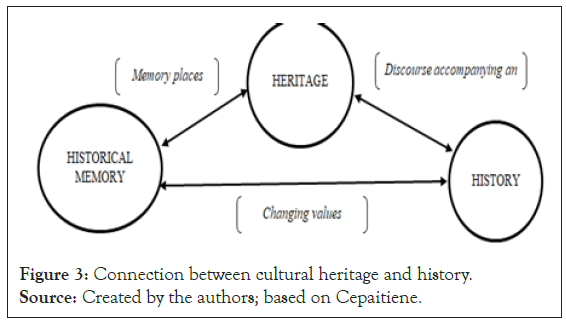
Figure 3: Connection between cultural heritage and history.
Source: Created by the authors; based on Cepaitiene.
As Figure 3 shows, all three parts (heritage, history, and historical memory) are closely related and strongly condition one another. Furthermore, this connection creates local specificity, i.e., historical memory of every nation, country or social group, emerging professional field of history and unique cultural heritage are different in both space and time. Because heritage is usually identified with tangible and intangible values that have something “old” and are characteristic of a certain value or flow of a historical period, authors who study the Soviet heritage relate it to the history of the communist regime period (1941-1990), heritage of its architecture and urban development, heritage of the objects of writing, press, art, music, cinema, theatre, lifestyle, values, rules (school uniforms), movements (Young Pioneers, Little Octobrists), interior design and objects created by other intellectual and practical activities (Soviet cars, vehicles, sculptures, memorial objects, places, etc.) within the territory of a specific country (Figure 4).
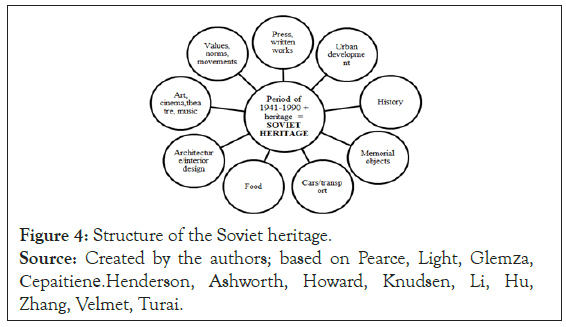
Figure 4: Structure of the Soviet heritage.
Source: Created by the authors; based on Pearce, Light, Glemza,
Cepaitiene.Henderson, Ashworth, Howard, Knudsen, Li, Hu,
Zhang, Velmet, Turai.
The Soviet heritage is a paradoxical concept. It is usual to explain many modern phenomena as a consequence of the Soviet legacy. Moreover, much of what is called national in post-Soviet societies is actually Soviet. Similarly, to the concept of cultural heritage, the concept of the Soviet heritage has its constituents that are presented graphically in (Figure 5).
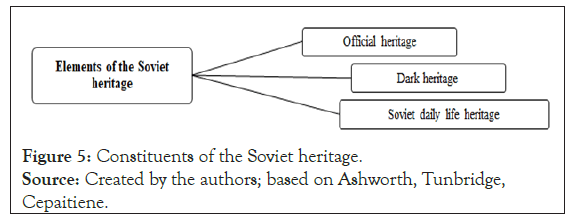
Figure 5: Constituents of the Soviet heritage.
Source: Created by the authors; based on Ashworth, Tunbridge,
Cepaitiene.
Figure 5 distinguishes the following three main constituents of the Soviet heritage: official (Soviet government and ideology) heritage where national socialism issues are important, i.e., “independence” of the Lithuanian Soviet government from the national point of view; heritage of resistance against totalitarian regimes (Nazi and Soviet) that can be attributed to dark tourism; Soviet daily life heritage, i.e., giving sense to the remnants of the Soviet daily life today [41]. All of these constituents are closely interconnected in reality and cannot always be separated easily. This feature makes a more unified understanding of the Soviet heritage more complex. Therefore, the analysis of the conception of the Soviet heritage shows that it is difficult to define the concept of the Soviet heritage accurately and clearly. Having distinguished the constituents of the Soviet heritage, more focus is paid to the analysis of the situation of these constituents in the country and society; it has been noted that giving sense to all three constituents in a modern country raises more and more problems [42].
The soviet heritage and dark heritage dissonance of heritage
Dark heritage, also synonymously called atrocity heritage, is attributed to the dissonant heritage group [43]. Even though, according to Ashworth and Hartmann, all heritage is more or less dissonant or can become such, upon changing circumstances dark tourism in the context of dissonant heritage distinguishes in that the nature of the human tragedy gives it much significance, and this dissonant heritage that would otherwise be insignificant as marginal or trivial becomes especially important [44-55].
Because of this, dark tourism cannot be excluded even though it is ideologically dissonant with the currently perceived national identity. According to Ashworth and Hartmann, dissonance emerges when there is a mismatch between people and heritage they identify with during a certain time or in a certain place. This mismatch can manifest due to many reasons but usually it arises from the fact that heritage, people who identify with this heritage and context that people and heritage interact with inevitably change over time [56]. This means that there is not an event, whether distant or recent past, that would have one objective interpretation; however, there are many alternative interpretations that change depending on the time period, political ideology, and other factors [57].
Intensive development of heritage that began in the end of the 20th century inevitably led to conflicts of groups of various interests [58]. It has been noted that instead of targeted goals of integration, economic benefit, cultural development and similar positive goals, heritage becomes a cause of social tension, political disagreements, and economic damages. This is especially clear when talking about dark heritage and dark tourism [59].
Among the first to study the phenomenon of dissonant heritage and provide practical recommendations for problem solutions are heritage management theorists Ashworth and Tunb ridge who also were the first to conceptualize the theory of dissonant heritage thus putting down foundation for its practical application. Dissonance (Fr. Dissonance, Lat. Dissonant-disagreeing in sound) is a musical term that stands for lack of harmony between sounds. Lukšionyte- Tolvaisiene defines dissonant heritage as that which exists in our environment; however, it does not represent our beliefs, attitudes, and ideals [60].
The Tunbridge and Ashworth paradigm of dissonant heritage distinguishes three main ways to create heritage dissonance. First of all, heritage dissonance emerges when the three main closely related resources-cultural, political, and economic in heritage are not harmonized [61]. Successful existence of heritage needs harmony of the three resources in order for a heritage object to be culturally valuable, correspond to political system attitudes, and make profit. It is important to note that Tunbridge and Ashworth’s dissonant heritage conception is based on the concept of heritage as product which treats heritage as a contemporary product fabricated to satisfy demand; it does not depend on the number of historical resources, can be created from anything, and issued on a mass scale. Therefore, the paradigm of dissonant heritage is first of all oriented towards heritage marketing; however, since all three resources of heritage are related, it can be applied in institutional heritage protection [62].
The second reason of dissonance could lie in the semantics of the heritage object. In other words, heritage contains a message is “read” and interpreted by a recipient, i.e., consumer [63]. The dissonance in the content of the message emerges: when the consumer is forced to construct an interpretation from several opposing ideas, when a different message from that being sent is received, when the form or content of the message are out-of-date, when the content of the message is unwanted, i.e., that which the consumer does not want to receive and (or) would not want other to receive [64]. The third type of dissonance is more difficult to conceptualize [65]. Its essence, all heritages is someone’s, and there is no heritage that is no one’s. If inheritance exists, then disinheritance exists as well. Thus, all heritages are potentially in dissonance because by belonging to a certain social group it becomes inaccessible to another one [66].
The essence of the dissonant heritage paradigm is that a major part of the conflict arising from heritage can be managed by means of appropriate management [67]. Dissonance can be turned into consonance, i.e., several opposing messages underlying in the heritage object and ways of consuming heritage as a resource can be coordinated into a harmonious entirety. Heritage contradictions, just like any other contradictions, are suggested to solve by choosing dominance of one side, a compromise variant or integration [68]. Here, a compromise solution should be understood as rejection of something from all sides so this way is not ideal. The most effective method of heritage dissonance management is integration of opposites because this way allows creating “democratic” conditions for all sides to satisfy their interests without rejecting anything [69]. To implement this model, Tunbridge and Ashworth propose following sustainable development principles based on environmental protection. The integral dissonance management model could be assigned the idea raised by Dolff-Bonekamper on the heritage discord value (Ger. Streitwert) whose essence is that a characteristic of an object to evoke disagreement/discussion is not a drawback but an advantage. According to the author, only intense communication among opposing sides can achieve agreement. The “consumer” of heritage should have conditions to critically evaluate and interpret dissonant heritage by getting to know not only the “facade” of heritage [70-75].
According to heritage that raises social dissonance is mostly dark heritage. Dark heritage includes those cultural heritage objects that are related to death, misfortunes, and catastrophes in one way or another. It is important to note that dark heritage is historically closely related to not only one group of people because its emergence inevitable includes very different groups of people such as executors of atrocities, victims, observers, and other related people [76]. Due to inevitable dissonance of interpretations of dark tourism, this type of heritage cannot be made universal, i.e., heritage that all related social groups could identify with. Therefore, only one certain interested social group can identify with a specific interpretation of an atrocious past event by assigning heritage to the group as a tragedy experienced by them. In this way, the “right to inherit” the tragedy is taken away from others. This is usually not done on purpose; often this right to inherit is taken away temporarily, and when circumstances change, it is possible to attribute it to another tragedy-related social group. However, this has respective social consequences.
On the other hand, undertaking a certain tragedy can be planned, politically engaged with a goal to create or enhance national or group identity by identifying with a certain group of victims, to achieve existing political goals, erase or deny a certain experience, commemorate victory or simply promote growth of tourism [77]. Therefore, politically ideologies exploitation of dark heritage is inevitable when creating respective interpretations of tragedies, deaths, and atrocities whose goal is not necessarily limited to economic benefit or cognition; it is often a means to create respective image as well. In order to correctly identify and adapt dark tourism for tourism, it is essential to understand the most typical possible ways of its interpretation. Interested groups related to the dissonant heritage can be categorized according to a matrix proposed by Poria by emphasizing typical models of dark heritage understanding. This matrix is presented in Figure 6.
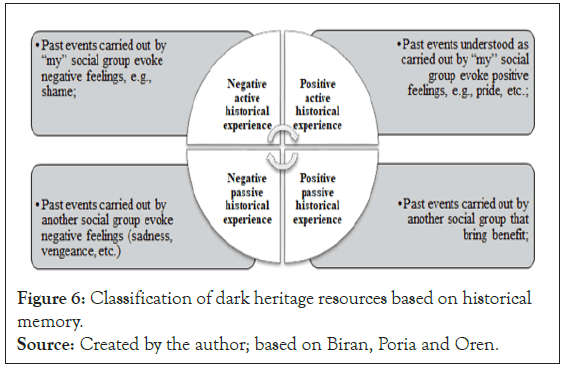
Figure 6:Classification of dark heritage resources based on historical
memory.
Source: Created by the author; based on Biran, Poria and Oren.
As Figure 6 shows, negative active historical experiences are avoided to be included into interpretations of dark heritage, which evokes formally sanctioned “collective amnesia” and heritage dissonance. In order to reduce the impact of political ideology transferred through interpretation of dark heritage and accept dark heritage in a more harmonious way, new narratives have to be created; this narrative would encompass all four groups of the aforementioned historical experiences by proposing a more acceptable and more general interpretation. In many cases, negative active historical experience is hidden, and attempts are made to forget the passive one by ignoring it. However, both of them continue to live in the historical memory by provoking conflict. Denial and ignorance of the negative historical experience characteristic to all social groups is not the most suitable way to come to terms with such past [78]. In these cases, the opposite should be done, i.e., the negative historical experience should be included into a new educational narrative that does not hide events but rather explains them; this narrative would be revealed to society through dissonant cultural heritage.
Speaking about the Soviet heritage as a category of dark heritage, it is first of all necessary to pay attention to the fact that cultural heritage is characteristic of an especially strong connection to the national politics and political development claims, talking about heritage is talking about politics. Sometimes a national historical period and its cultural heritage is assessed as an inconvenient and controversial topic; therefore, politicians, and sometimes the entries society, consciously avoid to talk and discuss about a specific period in history and its cultural legacy (e.g., slavery and racial segregation in the United States, apartheid in South Africa, Nazi government period in Germany or communist regimes as well as the Soviet occupation in Eastern Europe).
Analysis of studies on the topic of the Soviet heritage of the past couple of decades emphasizes two main directions, i.e., red tourism (trips to “active” communism countries, mostly China and communist heritage tourism (trips to former communist regime countries (mostly in Europe) and former Soviet Union republics. This classification was developed by C.C. Caraba, a scholar at the University of Bucharest (2011:29-39). However, the Soviet heritage in general is not widely distinguished from the general legacy of the communist period culture. One of the main reasons is that scholars from the Western countries were the first to take interest in the communist heritage (mostly, from the UK); they focused on the development of Eastern And Central European communist regimes with especially focus on Albania, Romania, Hungary, Poland and Bulgaria a little less-Baltic states .
According to Caraba, despite this, it is unnecessary to level down the heritage of all the communist countries (both former and current) because the histories of these countries are very different. On the other hand, the situation in China is different; therefore, the communist heritage of this country is analyzed separately, and this is the broadest direction of academic studies that comprises the majority of all publications on the topic of the Soviet heritage. Because of completely different development of former communist countries in Europe and the People’s Republic of China, assessment of the heritage of the same period in Europe and China is different: due to evident connections to death and negative history the European Soviet heritage is attributed to dark heritage, meanwhile this period in China is evaluated positively; therefore, in order to define the Chinese communist heritage and the related tourism industry within the country, separate definitions are used, i.e., red tourism and red heritage. Figure 7 provides characteristics of dark heritage and red heritage (Figure 7).
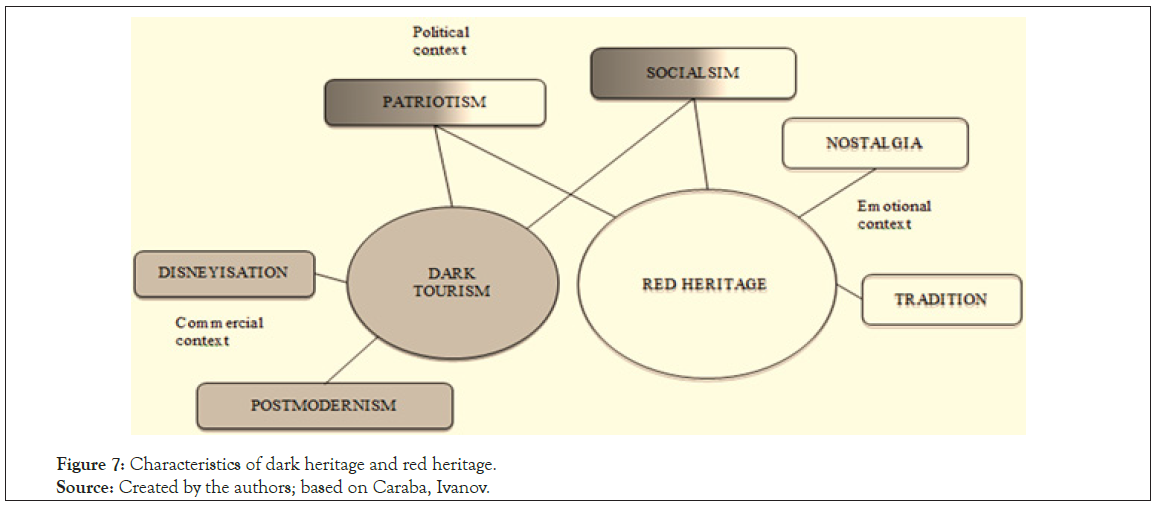
Figure 7: Characteristics of dark heritage and red heritage.
Source: Created by the authors; based on Caraba, Ivanov.
As Figure 7 shows, these two groups of heritage have quite emphasized differences. First of all, red heritage is characteristic of strong emotional context that sometimes balances on the verge of propaganda because there are artificial attempts made to encourage positive nationalist visitors’ feelings. Meanwhile, dark heritage is greatly impacted by the tourism business (commercial context): this type of heritage (especially its darker versions) is characteristic of attractiveness and orientation towards entertainment (disneyisation) without much focus on the history of a specific object or what significance it has on the local community. One the other hand, both of these categories have similarities as both of them have a close relation to the political context, i.e., both red heritage and a certain part of dark heritage objects (e.g., related to resistance, restoration of independence, etc.) are oriented towards strengthening of national identity and creation of pride in one’s country as well as presentation of a country’s situation during a specific period. However, it is important to note that when interpreting heritage, red tourism is presented through a positive paradigm with a focus on the political ideology. Meanwhile, the communist heritage is often evaluated negatively, and the ideological aspect is not emphasized as much. The communist heritage and the red heritage are not treated as synonymous concepts. The table below discusses differences between these categories in more detail (Table 1).
| Region | Red heritage | Communist heritage |
|---|---|---|
| China and other actively communist countries | Former communist countries in the Central and Eastern Europe and former republics of the Soviet Union | |
| Emergence | 2004 | 1990 |
| Development | Developed on the state level (controlled by a party) | Response to external demand (interest among tourists of Western countries) |
| Heritage localities | Presentation of the communist revolution of China | Introduction of communist regimes |
| Interpretation of heritage | Communist history and present are glorified | Negative presentation of the communist period |
| Target consumers | Chinese youth (students and pupils) | Tourists of Western countries (people who lived on the other side of the iron curtain) |
| Education | A very important aspect because it nurtures national pride and loyalty to the party; | Most often ignored or attempts are made to forget the communist past; thus, education does not get more attention; |
| Goal | Glorification of the communist past | Recreation and expansion of the cultural horizon |
| Issues | Interpretation of heritage-disneyisation | Interpretation of heritage -heritage dissonance |
Table 1: Comparison of red heritage and communist heritage.
Therefore, regarding the previous statements, this article will not analyze the Soviet heritage (i.e., that of the former Soviet republics) or communist heritage (former countries of the Warsaw Pact) separately. According to Ivanov (2009), the entire heritage of the 2nd half of the 20th century is characteristic of the same elements:
• Heritage objects are ideologically engaged and closely related to the national politics of the period.
• There is no unified assessment in the society, it is characteristic of dualism: a part of the society evaluates the heritage of this period as completely negative; however, the remaining part displays nostalgia and a certain sense of longing.
• Limited cultural resources (a relatively short historical period). characteristic of the personality cult, even though this is more typical of the communist regimes.
• Cultural resources are focused on places that are related to communist history in a particular country.
When evaluating the Soviet heritage, it is especially important to consider discussions on the cultural significance of objects, i.e., acknowledgement or denial, own or foreign, change or variability, etc. The emphasis on the meaningful aspect allows supposing that many of the problems related to the evaluation of architecture from this period are more related to ambiguity of architecture rather than questions of artistic value.
The soviet heritage as a tourism resource
Since 1990-1991, Western postmodernism tourists have been paying attention to communist Central and Eastern European countries as potential destinations for recreation. After the collapse of the communist regime, alternative or special demands tourism, otherwise known as thematic tourism, has grown. Sports tourism, green tourism, sex tourism, heritage tourism and dark tourism are several of the forms of alternative tourism that have been developed in the recent years. Alternative tourism also includes cultural heritage tourism related to the communist past in post-communist countries. It is important to note that tourism development in Central Europe is often related to the growth of the communist tourism heritage (Figure 8).
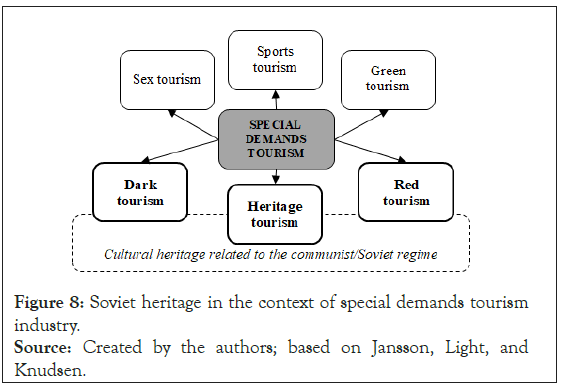
Figure 8: Soviet heritage in the context of special demands tourism
industry.
Source: Created by the authors; based on Jansson, Light, and
Knudsen.
The Soviet heritage is a historical part of a country’s culture. The modern heritage market is able to interpret the Soviet heritage in its own way yet with a basis. The main goal of this interpretation is commercial use of heritage. The heritage boom that has emerged due to this and the emergence of the heritage market itself is related to economic changes in the country; this is related to the economic decline when the past becomes “a better place” than the chaotic present and unclear future. This is especially noticeable in the society who lived in the Soviet and post-Soviet Lithuania. In the Soviet heritage market, an important factor is the chronological and psychological distance that allows evaluating an object that was used then in household and daily life and that did not have special emotional significance then. In a simple case, this can be explained by the phenomenon of death, i.e., when solely because of this fact a personal object, a work, a written piece or a painting that has not been valued becomes popular. An analogue for the factor of death and evaluation of what remains after it as an indefeasible drawn line in the society’s life is the constantly changing social and political regime, such as the processes that occurred in Lithuania after regaining independence.
However, the use of the Soviet heritage cannot be assessed only by commercial goals. Even though today heritage creates temptations to treat it as an economic resource that gives quick and tangible financial benefit only, many societies try to preserve it as a psychological, cultural and political resource. Looking from a historical perspective, the change in approaching heritage began from understating cultural resource (better perception of the past allows nurturing moral, ethical, aesthetic values relevant to the present) that prevailed until the end of the 18th century. Stepping into the 20th century, heritage was treated as a political resource (for construction and maintenance of identities of various level groups), and from the 60s-70 s, it was understood as an economic resource. In this 21st century, heritage is identified with a psychological resource as well (traditional living environment maintains people’s emotional stability and security). Therefore, the Soviet heritage in the modern tourism market is related to not only cultural, political, or economic resource, but also a psychological resource that is important both for the country and its citizens.
Commercialization tendencies of the Soviet heritage have both advantages and drawbacks. It is necessary to be careful when creating a product of economic heritage in the Lithuanian market. The historical aspect of location can put off because of anticipated nationalism, deterioration, or inability to adequately respond to the socio-economic change. The present seems unsafe and unclear for many; the strength of our nostalgia expresses not only the sense of loss, but also rejection and unwillingness to live in the present. Thus, one of the most important features of the Soviet heritage market is suitable development of the image of the past. Another problem of commercialization in this market is inadequate use of historical values. Heritage or its resources are often “created” thus distorting the nature of these resources. Experience shows that if cultural values are turned into mass consumption products, there is temptation to make them older or newer artificially, to distort their history in order to attract tourists by increasing the attractiveness of heritage resources. A problem of authenticity arises, i.e., the desire to please the consumer’s taste encourages artificial selection of “suitable” values. However, the tendency of commercializing the Soviet or other heritage should not be evaluated completely negatively. One of the causes of the Soviet heritage market emergence was an attempt to give the present that distanced itself from the past more coherence and meaning. Such “sale”.
Of heritage to the society evokes interest in history, develops a sense for history and desire to reflect. Moreover, informal education through visiting Soviet heritage objects shows that information is assimilated easier and remains longer. It can be said that the heritage market expands the significance of values and increases the opportunity to interact with them, and this in turn increases better quality and broader interest in the history of both the human and personal past. Ability to interact with culture and its heritage makes heritage places and objects attractive and relatively entertaining to tourists. Tourism turns the Soviet heritage into economically, politically, and psychologically marketable exhibit; thus, it cannot be denied that the heritage and tourism industries are closely related and give each other benefit. Therefore, the Soviet heritage as a tourism resource is evaluated differently due to its drawbacks and advantages; therefore, it is necessary to find out what benefit tourism based on the Soviet heritage can give individuals and the country. The analysis of benefit is provided in the next chapter.
The soviet heritage in cultural tourism: As it has already been mentioned, the Soviet heritage can be related to several categories of the tourism industry; thus, it is difficult to directly say which type of tourism this heritage belongs to. This is partially caused by the complex explanation of the concept of the Soviet heritage that complicates slightly more unified attribution of the Soviet heritage to one or another type.
The development of tourism is impacted by not only natural, but also human-made objects that attract tourists due to certain peculiarities. Therefore, heritage has the greatest significance and is important from the point of view of the identity of community or group and continuity. It reveals the variety of global cultures, and cultural heritage as well as its suitable application is very important in the tourism sector and prosperity of tourist places. The postmodern interpretation of using cultural heritage for tourism is based on the main assumption that the authenticity of cultural heritage is conditional. This means that the significance of an object for heritage tourism depends on how authentic it is, and on the attitude of the market towards it as a cultural heritage object. Therefore, it can be concluded that the tourism sector is one of the heritage markets. Also, there is a spreading opinion that heritage and tourism are activities that complement each other greatly. According, heritage, tourism and leisure are closely related areas. These three areas are like elements of one circulating process; however, they do not necessarily depend on each other. Heritage turns the tourism sector into a more attractive business area for both its consumers and creators. Tourism is one of the main paths of realizing cultural heritage industry. This gives rise to a new concept of the topic, i.e., cultural tourism that encompasses tourism and the area of cultural heritage including the Soviet heritage and its industry (Figure 9).
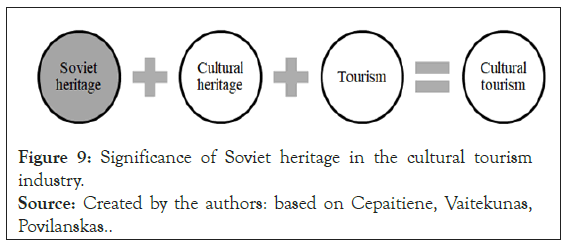
Figure 9: Significance of Soviet heritage in the cultural tourism
industry.
Source: Created by the authors: based on Cepaitiene, Vaitekunas,
Povilanskas..
The Soviet heritage is a witness of the lives of people during the communist regime; thus, its authenticity and reality are especially important for tourism development. Suitably preserved and presented heritage helps to reveal the cultural idiosyncrasy of the visited country. This century tourist who purposefully visits heritage objects creates his/her historical perception by coordinating cognition of authentic heritage and the fictional reconstruction of the historical past created by literature, television, cinema, and the virtual space also employing historical knowledge and imagination. Due to these reasons, the Soviet heritage is attributed to cultural tourism because it is an inseparable part of cultural heritage that represents the country’s history and its cultural development.
According to the development of cultural tourism was encouraged by the development of the tourism industry when the tourism industry was over-saturated with old tourism models (created and based on standardized travel packages) and was forces to change due to competitive market. Therefore, cultural tourism based on the Soviet heritage can be seen as a part of new tourism conception that will be discussed further.
Analysis of various sources and definitions of cultural tourism shows that a definition starts from very clear and strict formulation that identifies cultural tourism based on the number of museum visitors or the number or archaeological sites, to very broad concepts that do not distinguish cultural tourism from other areas of tourism. It is important to note that it is important to consider both movable and immovable heritage when trying to describe the concept of cultural tourism.
The World Tourism Organization defines cultural tourism as travel of people who are motivated by culture itself, i.e., scientific cognition, art publication, visiting galleries, visiting festivals and similar events, monuments, visiting observation decks, cognition of local folklore and art, pilgrimage, etc. According to cultural tourism is one of the areas of tourism that is created for special demands tourists and whose basis is culture of various forms and its heritage that attracts tourists or motivates people to travel and get to know. Cultural tourism is experience-rich activity that engages one into the local social life and cognition of the local heritage, culture, and special features particular to that location only. According to cultural tourism stands for acquired experiences by participating in festivals and other art events, creating connection with a specific community. According to the definition of these foreign authors, it can be concluded that cultural tourism is a factor that promotes today’s cultural heritage development. On the other hand, cultural tourism based on the Soviet heritage is a specific and authentic element of tourism that encompasses cultural resources, products of experience, their management, and tourists who, led by personal motivation, desire to know own and other customs, traditions and history, travel and visit localities of heritage, distinctive and pleasantly attractive communities.
The soviet heritage and nostalgia tourism: Nostalgia is the longing of the homeland; a longing idealized memory of the past, regret. According to nostalgia is a response to various personal needs or political requests when several different nostalgias between people and communities or social groups exist provides a concept of nostalgia from three points of view, i.e., sentimental longing for the past, regretful, and longing memory of the times past, and endless longing for home. Nostalgia is managed by utopian (dreamy) impulses, i.e., repeated desires, and also melancholic reactions to disappointments [79].
Boym claims that nostalgia is a sentimental reaction to loss and often a fantasy of an individual. It is important to note that feelings evoked by nostalgia can survive only when keeping the distance from the object that generates the feeling of nostalgia. Moreover, this object has to include an existing interaction of two opposing aspects, i.e., past-present, ideal-reality. The nature of nostalgia depends on external (broken connections with family and friends, language barrier, current and former social status difference, attitudes of other people, not being able to go back to homeland, etc.) and internal (age, education, mental strength, life goals, etc.) factors. Nostalgia arises because an individual always has idealized memories of the past and compares it to the present reality, its joys, and difficulties.
Therefore, when analyzing definitions of nostalgia provided by many authors, it has been notes that they are related and unified by such features as: search for the ideal; emergence of longing feelings generated by experienced joy and recreation of personal likes experienced in the past; subjective, personal ideals experienced and generated in the subconscious evoked by emotional sentiments and personal liking of the past relating them to the times lost, places, people, experienced lifestyle or a particular moment (Figure 10).
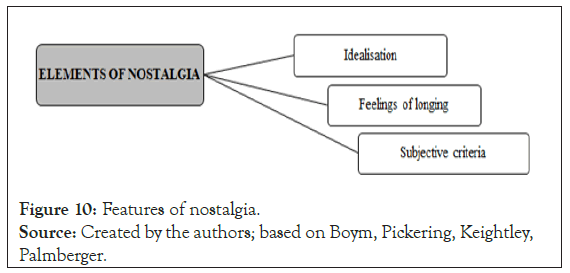
Figure 10: Features of nostalgia.
Source: Created by the authors; based on Boym, Pickering, Keightley,
Palmberger.
Based on the analyzed scientific literature, it can be said that the sense of nostalgia is promoted by the main factor (feature)- generation of emotion, i.e., usually a longing feeling by idealizing the past as a goal in the context of the present life stage. Longing is what creates nostalgic feelings and emotions that are dependent on each individual’s understanding of the ideal, sentiments and likes. Perception and creation of nostalgia are individual from every person’s point of view [80].
The search for the ideal by employing memories, losses and longing evokes the process of idealization in each individual sub consciousness. Realization of such idealization is implemented by moving to the created idealistic environment where an individual is able to recreate the past or understand it. Creation of such idealistic environment is generated by such business area as tourism. This gives rise to a new concept of the topic, i.e., nostalgia tourism. Nostalgia tourism can be described as a new phenomenon or new activity where consumers aim at actively experiencing former moments, remembering feelings, and reliving memories. Nostalgia tourism resonates with a sense of the past. Looking at nostalgia tourism from a wider point of view, it can be described as a great tool to recreate past memories that are often overtaken by the desire for the ideal, personal or a close person’s past happiness that creates sentiments for the past and turns it into a temporary reality (Figure 11).
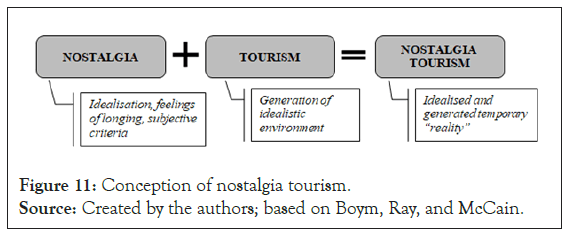
Figure 11: Conception of nostalgia tourism.
Source: Created by the authors; based on Boym, Ray, and McCain.
Therefore, according to Figure 11, nostalgia tourism can be defined as generation of the main features of nostalgia (idealization, feelings of longing, subjective criteria) in the tourism sector thus creating a temporary “real” and idealized past for an individual. According to this paradigm, the authors treat the Soviet heritage as inseparable from cultural and nostalgia tourism because the Soviet heritage belongs to both types of tourism (Figure 12).
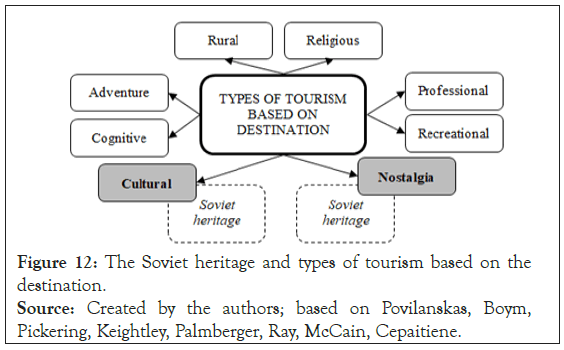
Figure 12: The Soviet heritage and types of tourism based on the
destination.
Source: Created by the authors; based on Povilanskas, Boym,
Pickering, Keightley, Palmberger, Ray, McCain, Cepaitiene.
As Figure 12 shows, heritage itself is understood as a part of certain historical period and essentially relates to culture; therefore, it is automatically included into the concept of cultural tourism. However, the Soviet heritage that represents the country’s life during 1941-1990 and its heritage of various forms within the territory of the country becomes a factor that generates a feeling of nostalgia that encourages the Soviet nostalgia tourism.
Revival and development of lost ideals and also transferring oneself to idealized environment that has not lost or has recreated the authentic atmosphere of the past is possible by employing specialized trips and routes. Selection of such routes depends on personal needs and traits. According to the product of nostalgia tourism is chosen by those who were born and raised earlier and who cannot turn the wheel of history back into the correct and secure past, and individuals who try to look for and return the attractive period leaving their permanent place of residence and moving to idealizing yet temporary environment. Nostalgia as a strong factor of encouraging emotions and senses has evoked the tendency of nostalgia tourism development. The Central and Eastern European region can offer such generation of emotions to those whose interest and nostalgia focus on the Soviet period or the communist period heritage. Since cultural and nostalgia tourism based on the Soviet period heritage can be treated as a part of the conception of new tourism, the conceptions of new tourism and new tourist should be discussed further.
When analyzing the concept of the Soviet heritage, it has been noted that authors in scientific sources explain the concept of the Soviet heritage employing the concept of general and cultural heritage. According to the scholars who study the Soviet heritage, it is related to the history of the communist regime period (1941- 1990), the heritage of its architecture, interior design, urban development, writings, press, art, music, cinema, theatre, lifestyle, values, rules, movements, and other objects created by means of intellectual and practical activities within the territory of a specific country. As analyzing the concept of Soviet heritage as a type of tourism industry, it becomes clear that this type of heritage can be related so several types of tourism such as cultural tourism and nostalgia tourism; thus, it is quite difficult to assign this type of heritage to a certain category of the tourism industry.
The Soviet heritage as a tourism resource is evaluated ambiguously. Some of the scholars relate the Soviet heritage to commercial goals, meanwhile others emphasize that the Soviet heritage in the modern tourism market exists not only as a cultural, political, or economic resource, but it is also valuable from the psychological point of view, which determines higher significance and importance for the society of a specific country. Therefore, tourism of such heritage is important when promoting the memory of the socialist regime in terms of the young generation and forming a more motivated and based national identity.
Citation: Jureniene V, Radzevicius M (2022) The Soviet Heritage: Conceptualization of Ambiguous. J Tourism Hospit.S2: 004.
Received: 16-Nov-2022, Manuscript No. JTH-22-20156; Editor assigned: 18-Nov-2022, Pre QC No. JTH-22-20156(PQ); Reviewed: 02-Dec-2022, QC No. JTH-22-20156; Revised: 09-Dec-2022, Manuscript No. JTH-22-20156(R); Published: 16-Dec-2022 , DOI: 10.35248/2167-0269.22.S2.004
Copyright: © 2022 Jureniene V, et al. This is an open-access article distributed under the terms of the Creative Commons Attribution License, which permits unrestricted use, distribution, and reproduction in any medium, provided the original author and source are credited.